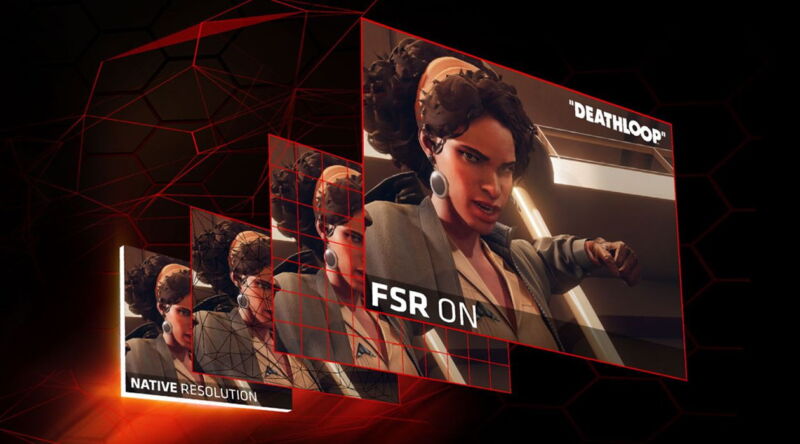-
 chevron_right
chevron_right
AMD’s FPS-doubling FSR 3 is coming soon, and not just to Radeon graphics cards
news.movim.eu / ArsTechnica · Friday, 25 August, 2023 - 15:30 · 1 minute

Enlarge / AMD's FSR 3 will compete with Nvidia's proprietary DLSS Frame Generation feature starting in September. (credit: AMD)
Even if you're not interested in buying one of the new Radeon graphics cards AMD announced today , the company still has some software-related announcements of interest to anyone who plays games on their PC. And that includes not just owners of older AMD GPUs but people who use Nvidia GeForce or Intel Arc cards, too.
First, AMD is finally ready to reveal more details about FidelityFX Super Resolution version 3, the latest major update to the company's open source upsampling technology. A competitor to Nvidia's proprietary Deep Learning Super Sampling (DLSS) and Intel's GPU-agnostic but nascent XeSS, all of these technologies attempt to generate a high-resolution image by rendering a lower-resolution image, blowing it up and filling in the gaps algorithmically to approximate what a natively rendered image would have looked like.
What GPUs support FSR 3?
Last year, FSR 2.0 went a long way toward making the technology more competitive with DLSS while also working on a wider range of graphics hardware from AMD, Nvidia, and Intel. Contrary to some prior speculation, FSR 3 will continue to support a wide range of old and new GPUs from all three major GPU companies. AMD has confirmed to us that the following graphics hardware should all support FSR 3:

